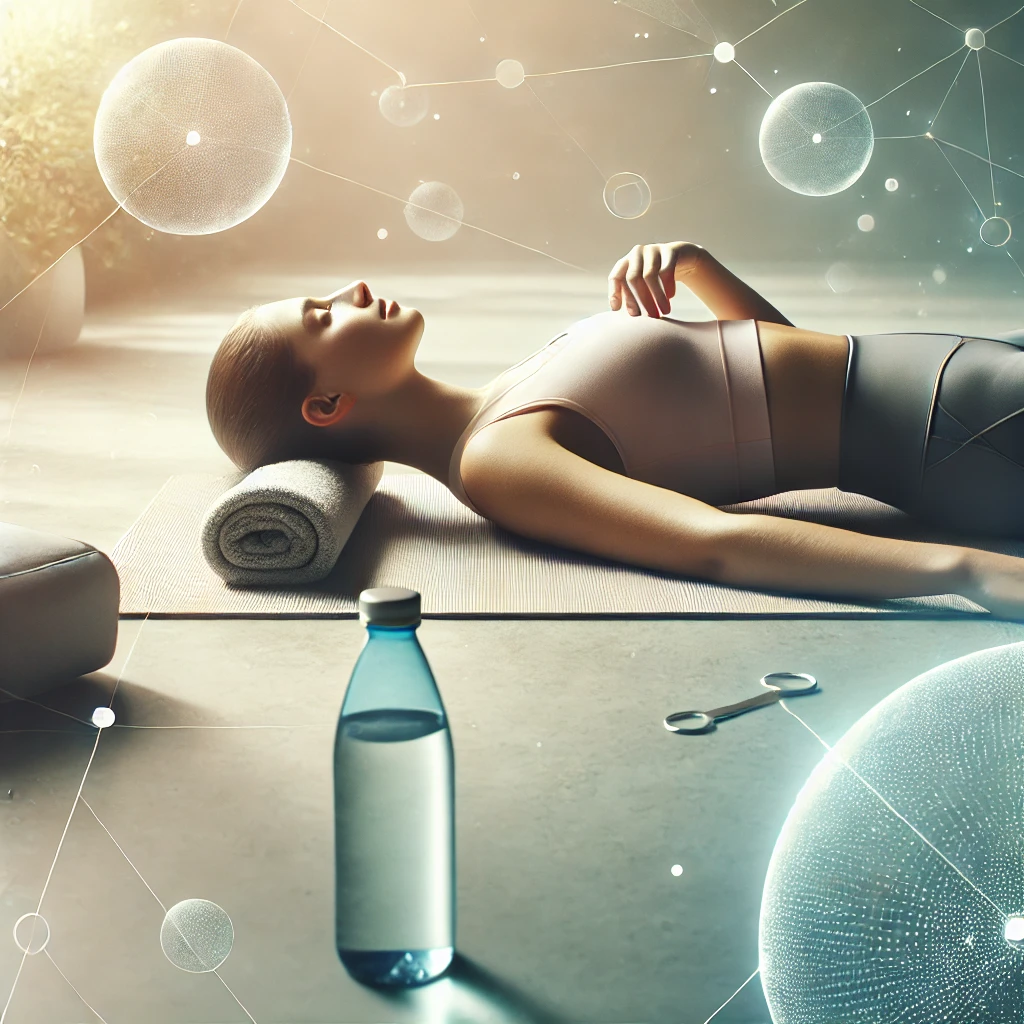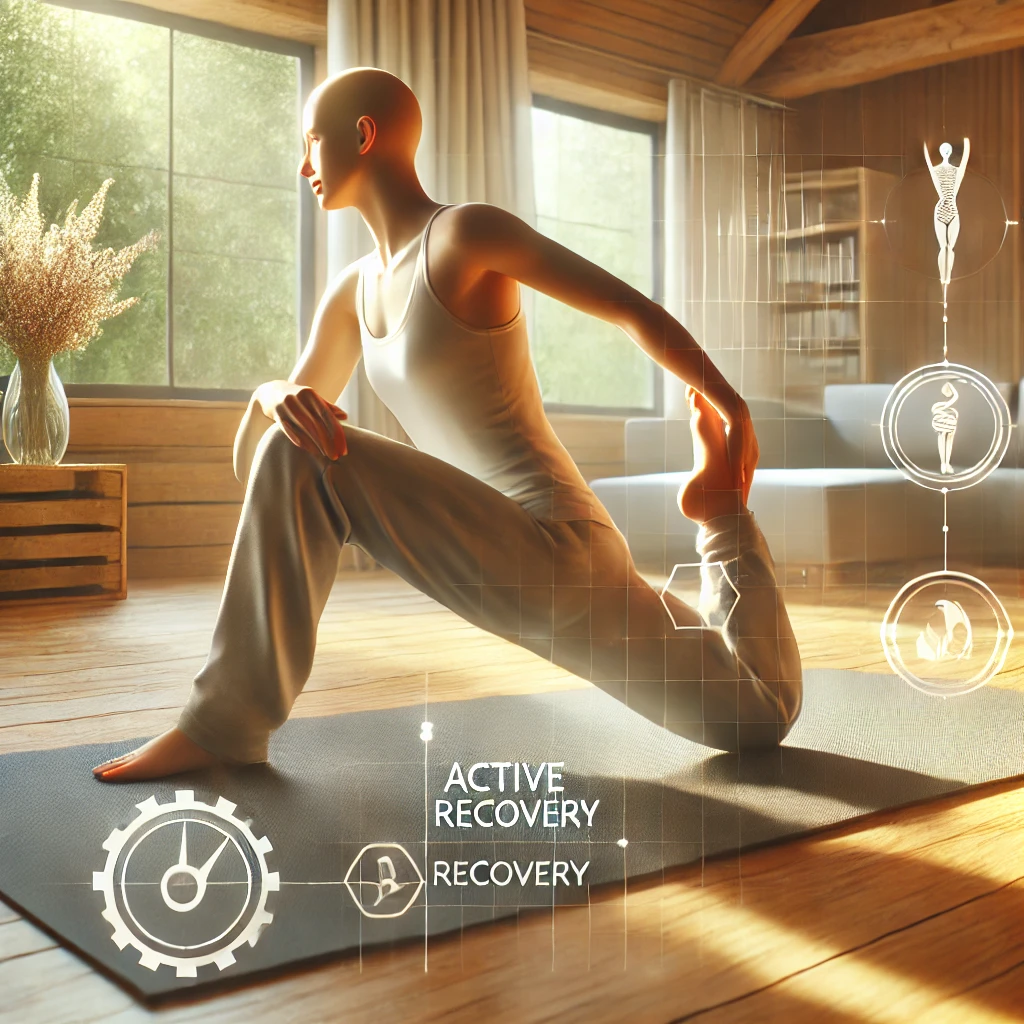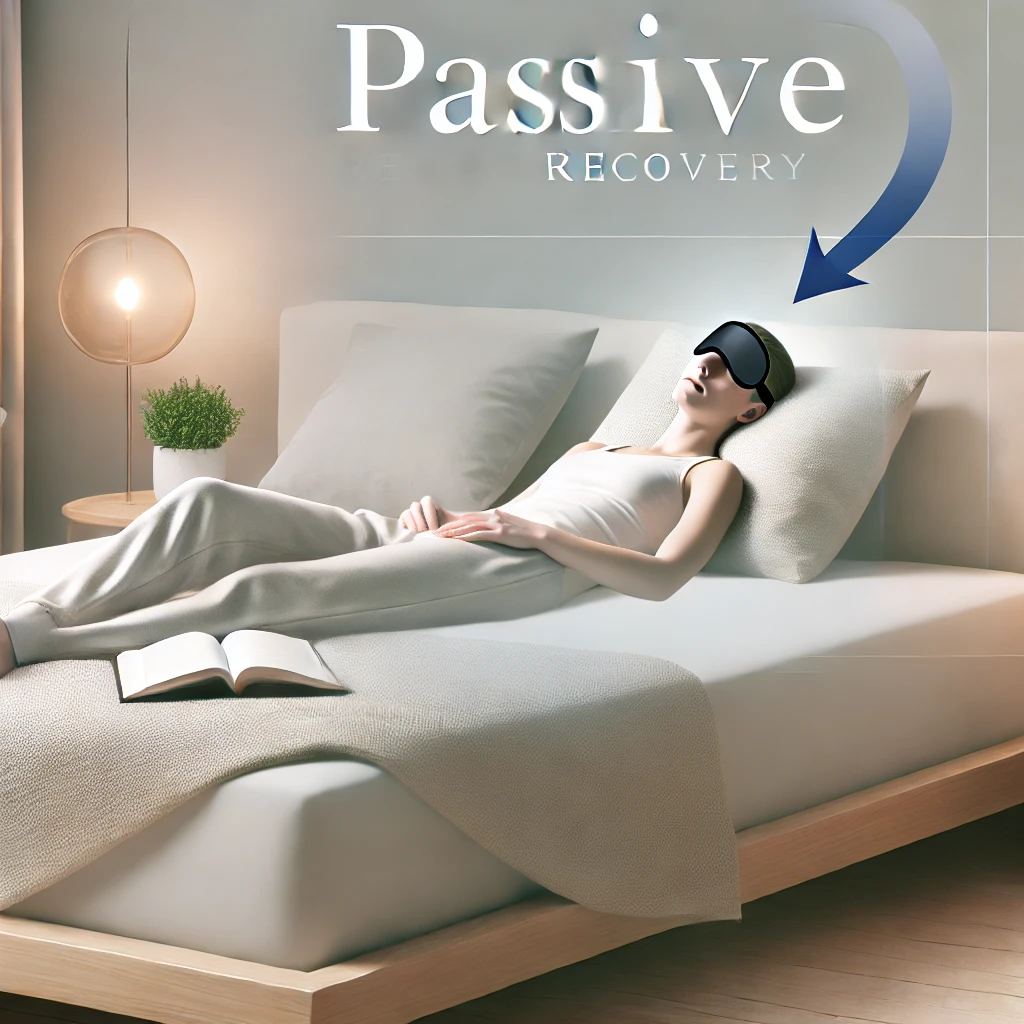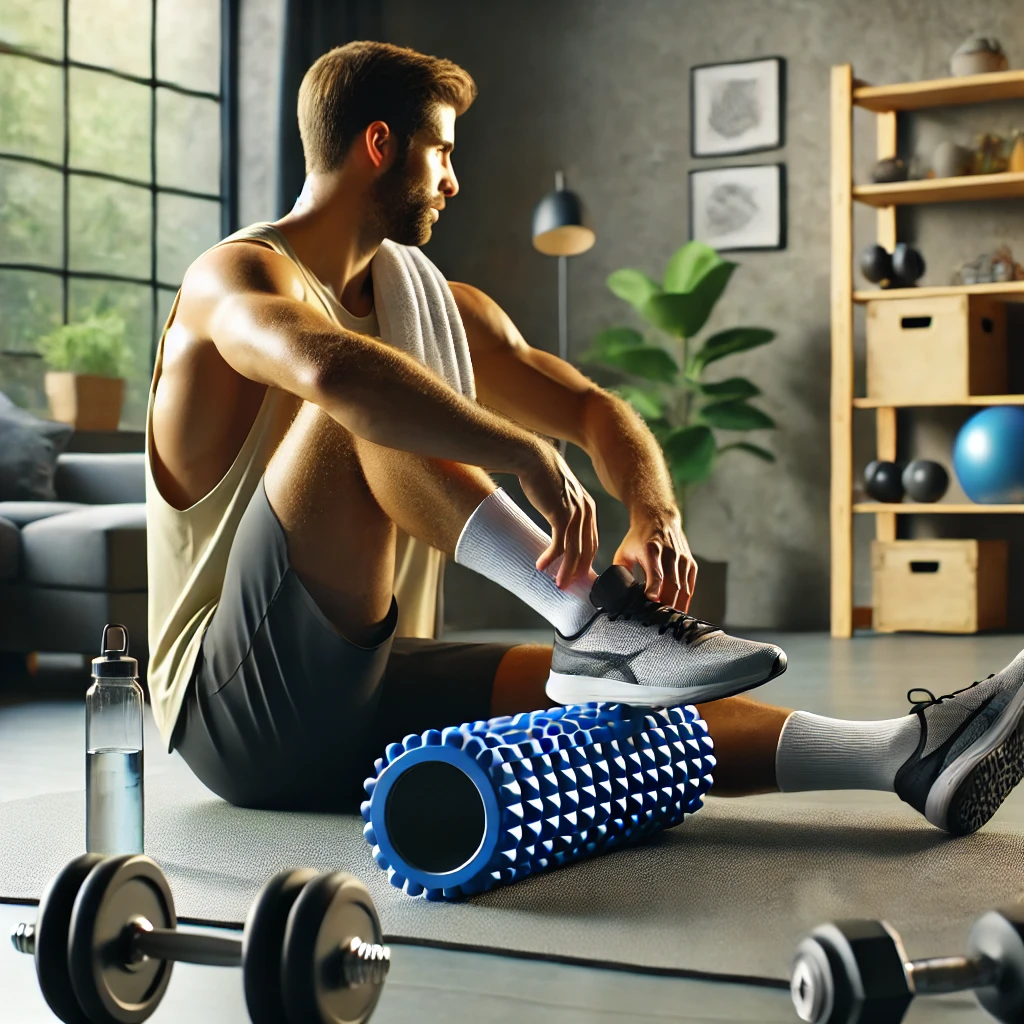
Rest and recovery are integral components of any fitness regimen, yet they are often overlooked. Many fitness enthusiasts focus on intense workouts and rigorous schedules, forgetting that rest and recovery are crucial for optimal performance and overall health. This comprehensive guide will delve into the importance of rest and recovery, explore different types of recovery, provide tips for improving sleep and reducing muscle soreness, and include insights from fitness experts. We’ll also promote free printable fitness motivation quotes to keep you inspired and recommend specific affiliate products to enhance your recovery process.
Table of Contents
- Importance of Rest and Recovery in a Fitness Regimen
- Types of Recovery and Their Benefits
- Active Recovery
- Passive Recovery
- Tips for Improving Sleep and Reducing Muscle Soreness
- Sleep Improvement
- Muscle Soreness Reduction
- Interviews with Fitness Experts and Physiotherapists
- Staying Motivated with Printable Fitness Quotes
- Recommended Products to Enhance Your Recovery
Importance of Rest and Recovery in a Fitness Regimen

Why Rest and Recovery Matter
Rest and recovery are as important as the workouts themselves. Without proper rest, your body cannot repair and strengthen itself, leading to potential injuries and decreased performance.
- Muscle Repair: During rest, the body repairs muscle tissues that are broken down during exercise. This process is crucial for muscle growth and strength.
- Injury Prevention: Adequate rest helps prevent overuse injuries by giving your muscles, joints, and connective tissues time to recover.
- Mental Health: Rest and recovery are essential for mental well-being. Overtraining can lead to burnout, stress, and decreased motivation.
- Performance Enhancement: Proper recovery improves overall performance by allowing the body to adapt to the physical demands of exercise.
Types of Recovery and Their Benefits
Active Recovery

Active recovery involves low-intensity exercises that promote blood flow and help remove metabolic waste from the muscles.
Benefits:
- Improved Circulation: Light activities like walking or cycling increase blood flow, delivering oxygen and nutrients to muscles.
- Reduced Muscle Soreness: Active recovery can help reduce delayed onset muscle soreness (DOMS) by keeping muscles moving and flexible.
- Enhanced Flexibility: Activities such as yoga and stretching improve flexibility and reduce muscle tightness.
Examples of Active Recovery:
- Light Cardio: Activities like walking, swimming, or cycling at a low intensity.
- Yoga: Gentle yoga sessions that focus on stretching and relaxation.
- Dynamic Stretching: Controlled movements that improve range of motion and muscle flexibility.
Passive Recovery

Passive recovery involves complete rest without engaging in physical activity.
Benefits:
- Full Muscle Rest: Allows muscles to fully recover and repair.
- Mental Recharge: Provides a mental break, reducing stress and preventing burnout.
- Injury Prevention: Reduces the risk of overuse injuries by giving the body time to heal.
Examples of Passive Recovery:
- Rest Days: Complete rest with no physical activity.
- Sleep: Quality sleep is a critical aspect of passive recovery.
- Relaxation Techniques: Activities such as meditation and deep breathing exercises.
Tips for Improving Sleep and Reducing Muscle Soreness

Sleep Improvement
Quality sleep is essential for recovery and overall health. Here are some tips to improve your sleep:
- Establish a Routine: Go to bed and wake up at the same time every day, even on weekends.
- Create a Sleep-Friendly Environment: Ensure your bedroom is dark, quiet, and cool. Consider using blackout curtains and a white noise machine.
- Limit Screen Time: Avoid screens (phones, tablets, TVs) at least an hour before bed to reduce exposure to blue light.
- Relaxation Techniques: Practice relaxation techniques such as deep breathing, meditation, or reading before bed.
- Avoid Stimulants: Limit caffeine and nicotine intake, especially in the afternoon and evening.
Muscle Soreness Reduction
Reducing muscle soreness can help you recover faster and get back to your workouts sooner. Here are some tips:
- Stay Hydrated: Drink plenty of water to help flush out toxins and support muscle recovery.
- Use Foam Rollers: Foam rolling helps release muscle tension and improve flexibility.
- Take Epsom Salt Baths: Epsom salt baths can help relax muscles and reduce soreness.
- Incorporate Stretching: Regular stretching can improve flexibility and reduce muscle tightness.
- Eat Anti-Inflammatory Foods: Foods rich in omega-3 fatty acids, antioxidants, and protein can help reduce inflammation and support muscle repair.
Insights from Fitness Experts and Physiotherapists

Rest and recovery are fundamental to any effective fitness regimen, yet they are often underestimated. To provide a deeper understanding of these crucial components, we consulted with several fitness experts and physiotherapists. Their insights highlight the significance of integrating rest and recovery into your training program to enhance performance and prevent injuries.
Dr. Karin VanBaak, Sports Physiotherapist
Why is recovery essential in a fitness routine?
Dr. VanBaak emphasizes that recovery allows the body to repair and strengthen muscle fibers that are broken down during exercise. Without adequate recovery, athletes risk overtraining, which can lead to chronic muscle soreness, fatigue, and a decline in performance. She highlights the importance of both short-term recovery (such as daily rest and sleep) and long-term recovery (periods of rest incorporated into an annual training schedule) (UCHealth).
Signs of Overtraining Syndrome
VanBaak notes that overtraining syndrome can affect up to 60% of elite athletes. Signs include persistent fatigue, decreased performance, and increased susceptibility to illness. She advises monitoring for symptoms such as unexplained muscle soreness, agitation, mood swings, and poor sleep, which indicate the need for more rest (UCHealth).
Certified Personal Trainer
The Role of Active Recovery
Nuffield Health advocates for active recovery, which involves low-intensity exercises that promote blood flow and aid muscle recovery. Examples include light cardio activities like walking or cycling, as well as yoga and dynamic stretching. These activities help reduce muscle soreness and improve flexibility without adding significant stress to the body (Nuffield Health).
Incorporating Active Recovery into Your Routine
Nuffield Health suggests scheduling active recovery days between intense workout sessions. For example, after high-intensity workouts on Monday, Wednesday, and Friday, you can engage in light activities on Tuesday and Thursday. This approach helps maintain physical activity while allowing the body to recover (Nuffield Health).
Mara Yamauchi, Distance Runner and Asics Ambassador
The Importance of Rest and Adaptation
Yamauchi explains that rest is critical for the adaptation process that makes athletes faster and stronger. During rest, the body replenishes glycogen stores, repairs muscle fibers, and produces new blood cells. She emphasizes that both physical and mental recovery are vital for sustained performance and enjoyment of training (worldathletics.org).
Steps to Improve Rest and Recovery
Yamauchi offers practical tips for enhancing recovery:
- Audit Your Sleep: Ensure your bedroom environment is conducive to good sleep and establish a consistent sleep schedule.
- Refuel After Training: Consume protein and carbohydrates shortly after workouts to expedite recovery.
- Mental Down-Time: Engage in activities that provide mental relaxation to avoid burnout.
- Monitor How You Feel: Regularly assess your energy levels, mood, and enthusiasm for training to detect early signs of overtraining (worldathletics.org).
Key Takeaways
Nutrition and Hydration
Proper nutrition and hydration are crucial for recovery. Consuming a balanced diet with adequate protein and carbohydrates supports muscle repair and replenishes energy stores. Staying hydrated helps flush out toxins and reduces muscle soreness.
Sleep and Passive Recovery
Quality sleep is essential for recovery as it is when most muscle repair and growth occur. Dr. VanBaak stresses the importance of sleep hygiene, such as avoiding screens before bed and maintaining a consistent sleep routine. Passive recovery, including complete rest days, allows the body to fully recuperate from the stresses of training (UCHealth) (worldathletics.org).
Injury Prevention and Mental Health
Both VanBaak and Yamauchi highlight the role of recovery in preventing injuries and maintaining mental health. Overtraining can lead to physical injuries and mental burnout, underscoring the need for balanced training schedules that incorporate sufficient rest (UCHealth) (worldathletics.org).
Staying Motivated with Printable Fitness Quotes

Staying motivated during your fitness journey can be challenging, especially during recovery periods. To help you stay inspired, we offer a free pack of printable fitness motivation quotes. These quotes can be printed and placed in your workout area, bedroom, or any space where you need an extra boost of motivation.
Benefits of Printable Fitness Quotes
- Simple Yet Effective: Easy to print and display, providing constant motivation.
- Encourages Consistency: Keeps you focused and committed to your fitness goals.
- Shareable: Perfect for sharing on social media to inspire friends and family.
Download Your Free Printable Fitness Motivation Quotes
Recommended Products to Enhance Your Recovery

Using the right tools and products can significantly enhance your recovery process. Here are some recommended products to consider:
Foam Roller
A foam roller is an excellent tool for self-myofascial release, helping to relieve muscle tension and improve flexibility.
- Product Link: TriggerPoint GRID Foam Roller
Epsom Salt
Epsom salt baths can help relax muscles and reduce soreness.
- Product Link: Dr. Teal’s Pure Epsom Salt
Sleep Mask
A sleep mask can help improve the quality of your sleep by blocking out light.
- Product Link: MZOO Sleep Eye Mask
White Noise Machine
A white noise machine can create a peaceful sleep environment by masking background noise.
- Product Link: LectroFan High Fidelity White Noise Machine
Protein Powder
A good quality protein powder can support muscle repair and recovery.
- Product Link: Optimum Nutrition Gold Standard Whey Protein
Hydration Bottle
Staying hydrated is crucial for recovery. An insulated water bottle helps keep your water cold for hours.
- Product Link: Hydro Flask Water Bottle
Yoga Mat
A comfortable, non-slip yoga mat is essential for stretching and active recovery exercises.
- Product Link: Manduka PRO Yoga Mat
Conclusion

Rest and recovery are essential components of a successful fitness regimen. By understanding the importance of recovery, incorporating both active and passive recovery techniques, and following tips to improve sleep and reduce muscle soreness, you can enhance your performance and overall well-being.
Staying motivated is key to maintaining consistency in your fitness journey. Download our free printable fitness motivation quotes to keep yourself inspired and consider the recommended products to support your recovery process.
Call to Action:
- Download Printable Fitness Motivation Quotes: Stay inspired and motivated with our free quotes. Download Now
- Shop Recommended Products: Enhance your recovery with our top picks. Shop Now
Disclaimer: Always consult with a healthcare professional before starting any new fitness program or making significant changes to your diet. This guide is for informational purposes only and should not be considered medical advice.
By following this comprehensive guide, you’ll be equipped to prioritize rest and recovery, enhancing your fitness journey and overall health. Stay motivated, stay consistent, and enjoy the journey to a healthier you!



Leave a Reply